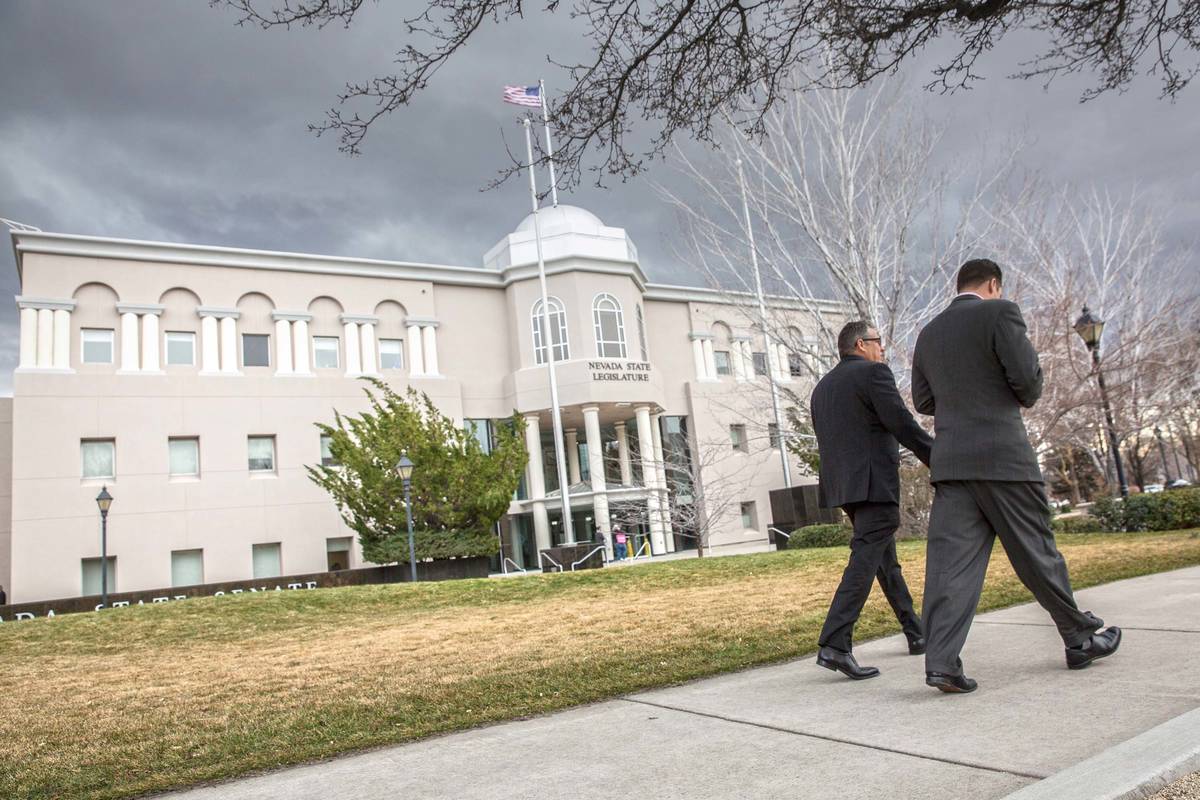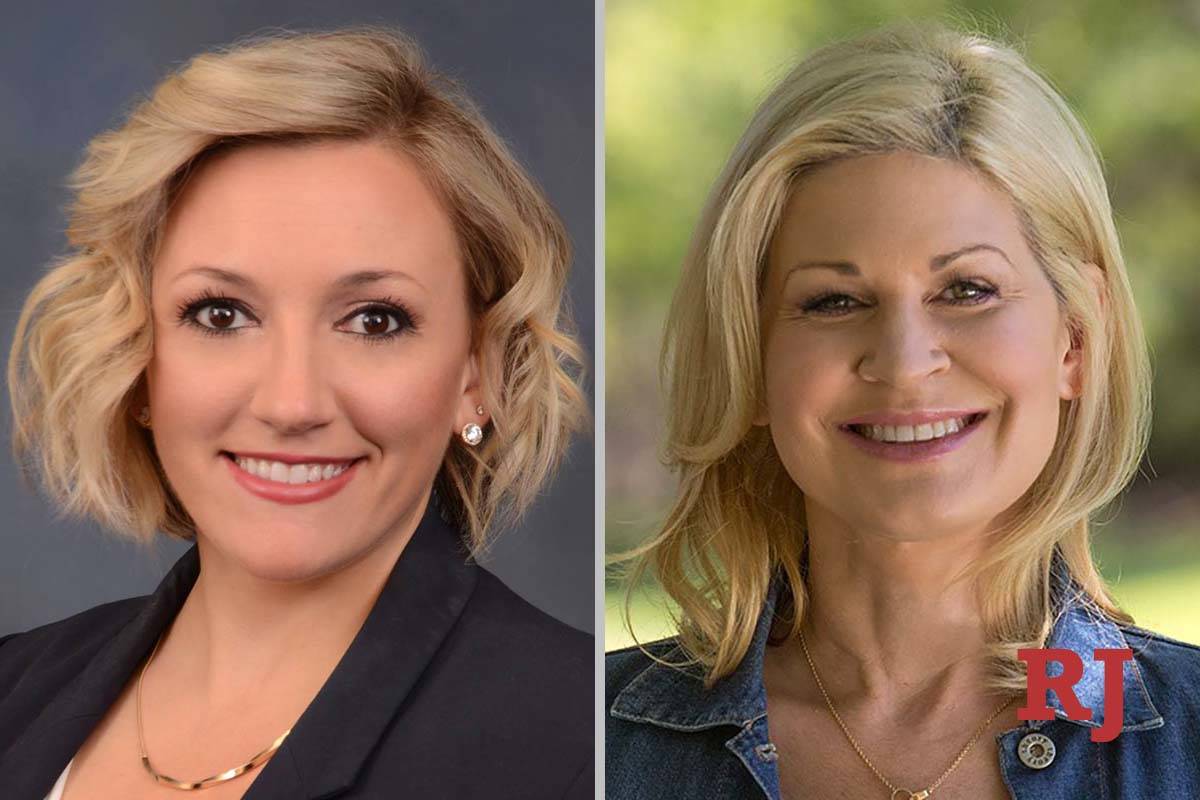These Nevada races will decide if Democrats have supermajorities
CARSON CITY — Everybody will be closely watching the results at the top of the ticket come Tuesday night. But what happens down the ballot could have a significant impact on Nevada government, with a Democratic legislative supermajority once again in play this year.
And for the Legislature, the fight over the balance of power effectively boils down to just seven or eight of the 52 total seats up for grabs this cycle.
In 2018, Democrats won a supermajority in the Assembly, taking 29 of the 42 seats. But they fell just 24 votes shy of a 14-person supermajority in the Senate, as Republican Keith Pickard oh-so-narrowly fended off Democrat Julie Pazina in the Henderson Senate district.
Related: Voter Guide 2020
A supermajority is when one party holds two-thirds of the seats in a chamber. It allows that party to pass tax and revenue increases without needing a single vote from the other side of the aisle.
This cycle, Democrats again have a chance to take control of 14 Senate seats for the supermajority, but doing so requires them to fend off a pair of well-funded Republicans in two other tight districts.
On the Assembly side, Republicans are focused on four key seats, and need to flip at least two of them to break up the Democratic supermajority that left the Assembly GOP effectively powerless in the 2019 legislative session.
“Give us two, and we’ll consider it not a bad election cycle,” said Eric Roberts, executive director of the Assembly Republican Caucus.
There are 52 seats in the Legislature up for election this cycle — 10 in the Senate and all 42 in the Assembly.
So why does the balance of power essentially rest in a handful of races?
First, there are 13 races where candidates are running unopposed in the general election and are guaranteed to win. Others have established incumbents going up against only third-party candidates.
And for the majority of the remaining seats on the ballot, one party holds a voter registration advantage of at least 10 points, a rough indicator of whether the district is competitive or not, as it is rare to see candidates close gaps larger than that.
Senate races
On the Senate side, it comes down to three races: Senate Districts 5, 6 and 15. Democrats hold a current 13-8 seat lead and need to pick up one seat to reach a supermajority.
Cheryl Bruce, executive director of the Senate Democratic Caucus, said that Democrats getting a supermajority would be “critical,” and that “the stakes have gotten higher this week,” after the newest justice for the U.S. Supreme Court was confirmed last week.
“After the confirmation of Amy Coney Barrett at the Supreme Court, a lot of things hang in the balance at the federal level. The Affordable Care Act, LGBTQ rights, a woman’s right to choose,” Bruce said. “We have an opportunity to elect Democrats to protect Nevadans at the state level.”
But two of those competitive races are currently held by Democrats and will need to be held to keep any chance of the supermajority alive.
That includes SD 6, the seat currently held by Senate Majority Leader Nicole Cannizzaro that is being challenged by Republican April Becker. Cannizzaro won the seat in 2016 by a little more than 1,000 votes, or less than 2 percentage points. Voter registration in the district has inched a little more in favor of Democrats since 2016, and now sits at about an 8-percentage-point margin.
SD 5 could be a tough seat for Democrats to defend because, while they currently hold the seat, they don’t have an incumbent running this year. Joyce Woodhouse, who has held the seat since 2012, is term limited and cannot run again.
Similar to Cannizzaro, Woodhouse won in 2016 by a narrow margin, and the 6-percentage-point voter registration advantage in this district this year is about the same as 2016, as well.
Where voter registration has seen a significant shift is in Washoe County’s SD 15, where incumbent Republican Heidi Gansert is running for re-election against Democrat Wendy Jauregui-Jackins.
Gansert won the seat in 2016 by 11 percentage points. That year, Republicans had a roughly 2-percentage-point voter registration advantage in the district.
This year, however, Democrats head into the last month of the election cycle holding a 1-point advantage.
“The seat is getting more Democratic, just by virtue of how Washoe [County] is changing,” Bruce said.
Assembly races
Assemblyman Tom Roberts, co-minority leader for the Assembly Republicans, said that his caucus is taking a more narrow approach this year than in past cycles, when Republicans focused more broadly on trying to regain the majority they had in 2014.
That means focusing only on the races that they’ve identified as potential opportunities to flip.
“We didn’t want to go after anything that was going to be more than a 5 percent voter registration disadvantage,” Tom Roberts said.
For the Assembly, that means Southern Nevada Districts 4, 29 and 37 and the Sparks-based District 31. To break the Democrats’ supermajority, Republicans will need to flip at least two of those seats.
Tom Roberts and co-minority leader Jill Tolles have been helping fund an independent expenditure group via their leadership PACs focused mostly on those races. Roberts said they expect to have spent around $200,000 by Election Day on those efforts.
“We thought it would be best to be focused, get a couple seats, and regroup come mid-terms,” Tom Roberts said.
Democrats unseated the Republican incumbents in AD 4 and AD 37 in 2018, but won each seat by less than 150 votes. Voter registration in both districts remains very competitive this time around, too.
AD 29 and and 31, on the other hand, have been held by the current Democratic incumbents since 2016 and present a bigger challenge to flip.
AD 31 is unique. Republicans hold a 3-point registration advantage in the Sparks district. But Democrat Skip Daly has held that seat for three out of the last four cycles, losing only in the 2014 red wave that Republicans have not been able to match since. And he’s going up against the same Republican, Jill Dickman, that he has defeated in the previous two elections.
“That one’s been a thorn in our side for a while,” said Eric Roberts, of the Assembly GOP caucus.
Contact Capital Bureau Chief Colton Lochhead at clochhead@reviewjournal.com. Follow @Colton Lochhead



















